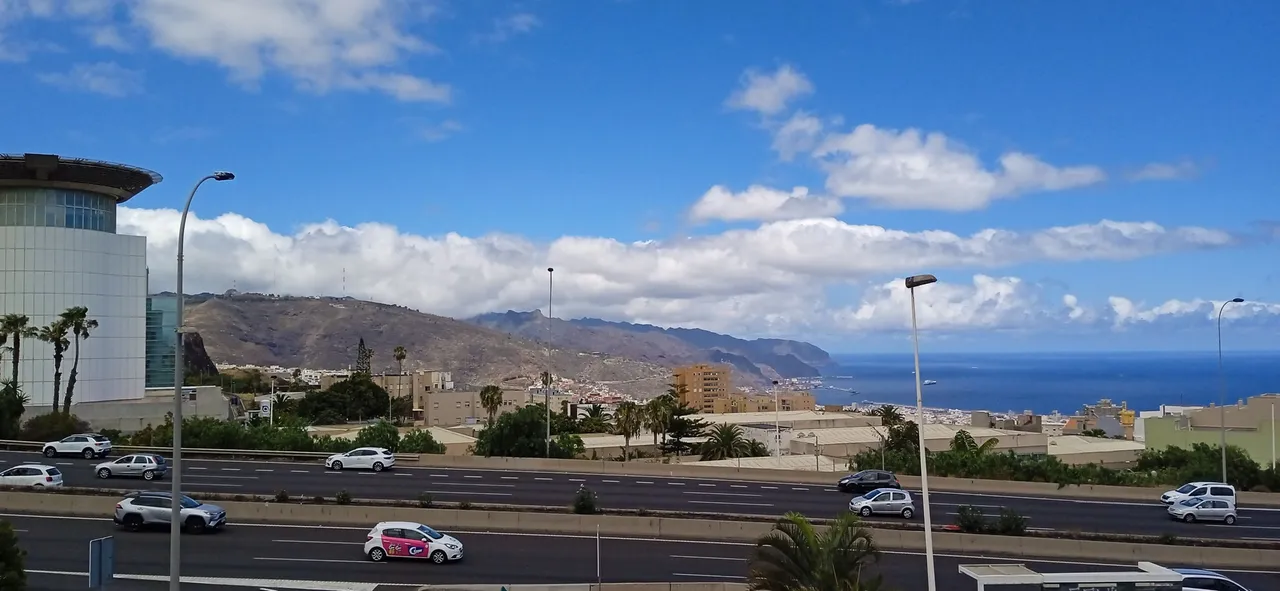¡Saludos amigos! En una publicación anterior, les hablaba del Tranvía de Tenerife. En dicha publicación, les mencionaba algo acerca de una polémica por la gratuidad del transporte público en la isla. En este post, y debido a que estoy trabajando por publicar algo diariamente en mi blog de #Hive y que en este momento es lo que se me ocurre escribir, les hablaré un poco de ello.
Como les comentaba, el precio de un viaje en el Tranvía es de 1.05€, independientemente del recorrido que se haga. En los buses (guaguas), el precio va desde los 0.75€ hasta 1.5€ (aproximadamente) en viajes dentro de la ciudad, y entre 2 y 10€ (aproximadamente) para viajes a otros puntos de la isla. Sin emabrgo, este es el precio para quienes posean una tarjeta física de transporte, quienes paguen en efectivo deben pagar un poco más.

Todos pueden adquirir una tarjeta de transporte, son fáciles de conseguir. Normalmente son turistas recién llegados quienes no poseen una tarjeta de estas y pagan en efectivo estos precios un poco más altos. Los turistas pagan el transporte público, pero los residentes en la isla tienen acceso al bono de transporte gratuito, para así facilitar su movilidad diaria. Pero no todos los residentes tienen acceso, y esa es la pequeña polémica que existe, o al menos existía hasta hace poco en la isla.
Hasta febrero o marzo del año anterior, había acceso a la gratuidad del transporte público a todo aquel que estuviese empadronado (establecida su vivienda de residencia) en la isla. Esto incluye todas las líneas de autobuses (Guaguas) y el tranvía en la ciudad capital, es decir, todo el transporte público de la isla.
Al ser una isla cuya extensión de un extremo a otro no supera los 100 Km, tiene sentido otorgar un gratuidad "global" a todos sus habitantes, además de que la red de carreteras y autopistas no es tan compleja.
Sin embargo, al parecer hubo un cambio en la administración del transporte público es toda Canarias, y cada isla decidió como administrar el acceso a esta gratuidad. En todas las islas se mantuvo igual, pero en Tenerife hubo un cambio sustancial: sólo se accede a la gratuidad si estás empadronado en la Isla y eres español o extranjero con Residencia (legalmente hablando), es decir, poseer una Tarjeta de Identidad de Extranjero (TIE).
Esto hace que una persona empadronada en la isla, con NIE y permiso legal de estar y trabajar en el país, pero que aún no tiene esta tarjeta o un DNI, no tiene acceso a la gratuidad del trasporte público. Pero ¡Hay una buena noticia! Al menos para los venezolanos: recientemente, se permitió el acceso a este bono de transporte gratuito a venezolanos que estén empadronados en la isla y que presenten su pasaporte o NIE provisional.
Supongamos que eres un migrante (por ejemplo, argentino o cubano) que logró empadronarse en una zona apartada de la ciudad capital. Consigues un empleo en la ciudad, pero llegar allí cuesta 3,5€ ya que debes tomar 2 guaguas (buses) para llegar, por lo que al mes estarías gastando, como mínimo, 140 euros en viajes. Esto supone un costo importante para alguien que quizás sólo tiene un empleo a medio tiempo, con un sueldo de 500 euros.
Hay que destacar que el reclamo de la gratuidad por parte de algunos migrantes no es una cuestión de exigir algo gratis sin ser un nacional, sino de no ser tratado como un turista que viene con todo el dinero del mundo a gastar 20 o más euros en transporte diario, si es el caso de una familia entera en situación de vulnerabilidad económica.
Si lo pensamos mejor, es algo que incluso dificulta la integración de estos migrantes, puesto que su movilidad se ve limitada respecto a los locales y otros migrantes que sí tienen la TIE. Es decir, no es una cuestión de "tener que pagar". Pero esto no sólo afecta los migrantes, ya que un local que tiene vehiculo propio y que un día decide usar el transporte público también debe pagar: el bono gratuito solo tiene vigencia si tiene un mínimo de viajes realzados trimensualmente.
Por otro lado, vengo de un país (Venezuela) en donde la gratuidad (entre otros factores) del Metro de la ciudad capital trajo consigo un deterioro y pésimo servicio de sus instalaciones. En un país más desarrollado es poco probable que se llegue a tales extremos, pero es algo a tomar en cuenta.
Creo que con el adecuado mantenimiento y recursos el transporte público puede ser muy bueno, y al menos hasta ahora no me puedo quejar para nada del transporte público aquí en la isla. A pesar de que por un buen tiempo no tuve acceso a esta gratuidad, creo que más bien agradezco que pueda utilizarlo y que no tenga las graves fallas que si hay en mi país.
¡Nos vemos en un próximo post! ¡Hasta la próxima! ¡Gracias por visitar mi blog!

Click here for the English Version
Greetings friends! In a previous post, I told you about the Tranvía de Tenerife. In that post, I mentioned something about a controversy over free public transportation on the island. In this post, and because I'm working on posting something daily on my #Hive blog and that's what I can think of to write at the moment, I'll tell you a bit about it.
As I mentioned, the price of a trip on the Tram is 1.05€, regardless of the route. In the buses (guaguas), the price ranges from 0.75€ to 1.5€ (approximately) for trips within the city, and between 2 and 10€ (approximately) for trips to other parts of the island. However, this is the price for those who have a physical transport card, those who pay in cash must pay a little more.
Everyone can purchase a transport card, they are easy to obtain. It is usually newly arrived tourists who do not have such a card and pay these slightly higher prices in cash. Tourists pay for public transport, but residents of the island have access to free transport vouchers to facilitate their daily mobility. But not all residents have access, and that is the little controversy that exists, or at least existed until recently on the island.
Until February or March of the previous year, there was access to free public transport to anyone who was registered (established their residence dwelling) on the island. This includes all bus lines (Guaguas) and the tramway in the capital city, that is, all public transport on the island.
Being an island whose extension from one end to the other does not exceed 100 km, it makes sense to grant a "global" gratuity to all its inhabitants, in addition to the fact that the road and highway network is not so complex.
However, apparently there was a change in the administration of public transport throughout the Canary Islands, and each island decided how to manage access to this free service. In all the islands it remained the same, but in Tenerife there was a substantial change: you only have access to the free fare if you are registered on the island and you are Spanish or a foreigner with Residencia (legally speaking), that is, have a Foreigner's Identity Card (TIE).
This means that a person registered on the island, with NIE and legal permission to stay and work in the country, but who does not yet have this card or a DNI, does not have access to free public transport. But there is good news! At least for Venezuelans: recently, Venezuelans who are registered on the island and present their passport or provisional NIE were allowed access to this free transportation voucher.
Let's suppose you are a migrant (for example, Argentinean or Cuban) who managed to register in a remote area of the capital city. You get a job in the city, but getting there costs €3.5 because you have to take 2 guaguas (buses) to get there, so you would be spending at least €140 a month on travel. This is a significant cost for someone who may only have a part-time job, with a salary of 500 euros.
It should be noted that the claim of free travel by some migrants is not a question of demanding something for free without being a national, but of not being treated as a tourist who comes with all the money in the world to spend 20 or more euros on daily transportation, if it is the case of an entire family in a situation of economic vulnerability.
If we think about it better, it is something that even hinders the integration of these migrants, since their mobility is limited with respect to locals and other migrants who do have the EIT. In other words, it is not a question of "having to pay". But this does not only affect migrants, since a local who has his own vehicle and one day decides to use public transportation must also pay: the free voucher is only valid if he has a minimum number of trips made every three months.
On the other hand, I come from a country (Venezuela) where the free (among other factors) of the Metro of the capital city brought with it a deterioration and terrible service of its facilities. In a more developed country it is unlikely to reach such extremes, but it is something to take into account.
I believe that with proper maintenance and resources public transportation can be very good, and at least so far I can't complain at all about public transportation here on the island. Although for a long time I did not have access to this free service, I think I am rather grateful that I can use it and that it does not have the serious flaws that there are in my country.
See you in the next post!... Thanks for visiting my blog!
Translated to English language with the help of DeepL.com
Fotografías de autoría propia / Own photos (Redmi 9C)
Otras redes sociales:
 |
 |
 |
F1 & motorsports: @acontmotor
Expresión Creativa. Literatura | Entretenimiento | Arte: @acontblog
| ¡Gracias por visitar! — ¡Thanks for visiting!  |